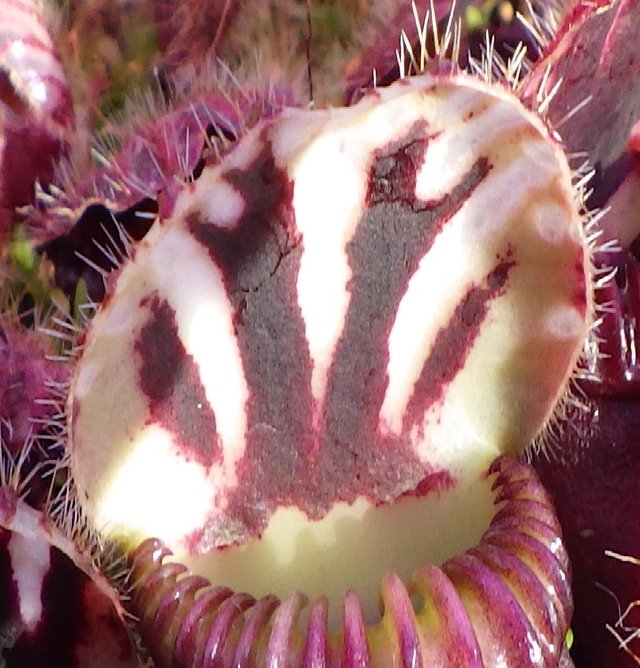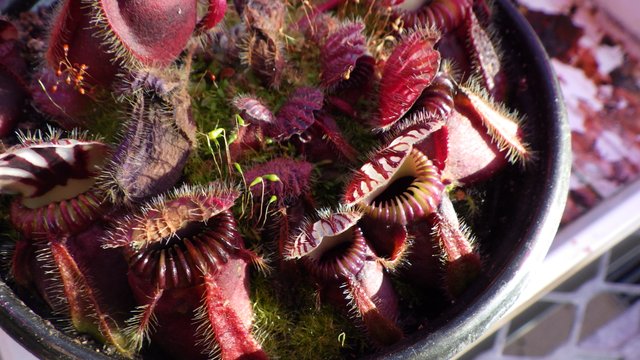Cephalotus follicularis - Australian Pitcher Plant
This carnivorous plant, Cephalotus follicularis, reminds me of "Seymour" in the "Little Shop of Horrors" (4)! It is commonly known as the "Australian pitcher plant", although other common names include: "Albany pitcher plant", "Western Australian pitcher plant", "or fly-catcher plant" (1). It is a member of the Cephalotaceae family (order Oxalidales) of the angiosperms, and is the only species of its genus (1). It was photographed by myself growing in the Dept. of Horticulture and Landscape Architecture greenhouse at Purdue University, West Lafayette, Indiana, USA on February 21, 2019.

This species is only very distantly related to the tropical pitcher plants of the genus Nepenthes (family Nephenthaceae, order Caryophyllales) (3). It provides a very interesting example of convergent evolution, where plants from distinct angiosperm orders evolve similar specialized strategies for capture and digestion of insects to augment their nutrition.
The genome of Cephalotus follicularis was recently sequenced (2). C. follicularis has two types of leaves (i.e. it is heterophyllous). The young leaves of the plant are non-insectivorous. The older leaves form a 'pitcher' with a lid (operculum) (1). The 'pitcher' becomes a dark reddish color under high light conditions and functions to trap insects (1). Transcriptome analysis of the young, non-insectivorous versus insectivorous leaves have revealed key genes associated with prey attraction, capture, digestion and nutrient absorption (2). Furthermore:
Analysis of digestive fluid proteins from C. follicularis and three other carnivorous plants with independent carnivorous origins revealed repeated co-options of stress-responsive protein lineages coupled with convergent amino acid substitutions to acquire digestive physiology (2).
References:

This post has been voted on by the SteemSTEM curation team and voting trail in collaboration with @curie.
If you appreciate the work we are doing then consider voting both projects for witness by selecting stem.witness and curie!
For additional information please join us on the SteemSTEM discord and to get to know the rest of the community!
Creepy and fascinating at the same time.
Those are really good-looking!
Thank you! It's a very photogenic carnivore that seems to be very happy in its environment!
Fantastic photos and fantastic plant!
Congratulations @davidrhodes124! You have completed the following achievement on the Steem blockchain and have been rewarded with new badge(s) :
Click here to view your Board
If you no longer want to receive notifications, reply to this comment with the word
STOPTo support your work, I also upvoted your post!